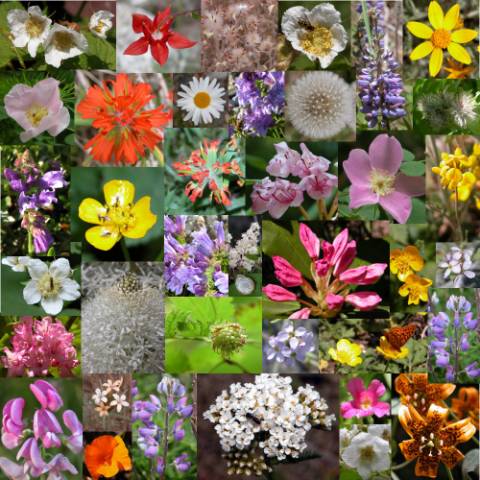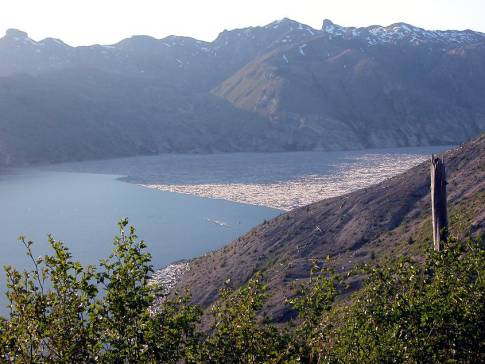
Hello to all,
The top of the mountain was just gone. It was impossible to conceive. It was impossible to understand, even when you were looking at it. The forest was leveled for over 10 miles. There was nothing but a few stumps and fallen trunks.
I had tried in vain to capture the immensity of the destruction in pictures. I was completely unsatisfied with the results; they were such a small sliver of the horizon-to-horizon jaw dropping devastation.
I finally settled on a shot that showed a modest portion of Spirit Lake, which had risen 200 feet in depth when the entire side of Mt. St. Helens, along with a river of mud and ash, filled its Western end. Almost half of the remaining water in the lake was still covered with millions of floating logs, the slowly decomposing skeleton of the forests that had lined the slopes surrounding the lake 23 years ago when the volcano blew itself apart.

I also liked a shot that showed life slowly returning to the pumice desert that ringed the volcano for five to ten miles.
Life is such a powerful force. It finds a way to force itself into the smallest cracks in a desert of rock and slowly, inexorably, pushes out the death and blankets all it touches with the rich carpet of growth, decay and renewal.
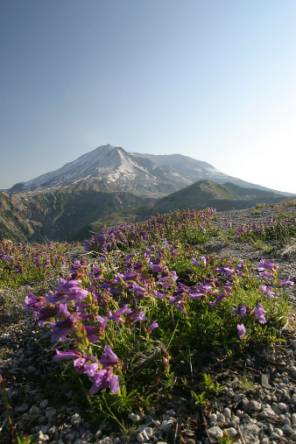
I remembered these images as I gently pushed on the bars to lean the bike into another apex. While softly trail braking into the corner, gently rolling on the throttle, keeping my eyes on the exit, I just couldn’t clear my soul of the pervasive sense of sudden loss and destruction that permeates you when you visit the mountain. Steph noted that it was the same feeling we had when we stood and looked at the void of ground zero in Manhattan.
The undulating road leading south out of Mt. St. Helen’s National Volcanic Monument was growing dark. We’d stayed at the viewpoint closest to the snow-covered crater until nearly sunset. The 50 miles to the closest town was a small piece of the over 1,800 miles we would ride through National parks, forests, monuments, wildernesses, etc. on our 3,000 mile trip from near the Canadian border to our home in Carlsbad, California. Not a mile we would ride was any better road than what we were winding down as the velvet blackness of the night enveloped us. A seductive, rhythmic ribbon of perfect asphalt laid along the valleys of the Cascade range, the roads into and out of the park are among the best I’d been on anywhere in the world.
There was no better place to be on a motorcycle. Even a heavily laden motorcycle. Even the heaviest motorcycle you’d ever ridden. Even a brand new motorcycle you’d never ridden before filled with luggage, cameras and your precious wife. Even with the challenges of learning and adapting to all the new systems, equipment, clothing and gear, and now the darkness, the road was the perfect blend of challenge and reward.
As the darkness closed in and extinguished the last traces of the lingering June twilight, the powerful low beam, high beam, and halogen driving light pierced a long bright tunnel through the black tunnel formed by the trees overhanging the twisting road.
As the night’s chill began to penetrate our riding gear, I reached down to turn on the seat heaters and clicked on the electric handgrip warmers, the warmth immediately and reassuringly wrapping us in comfort.
The long-range high beam and driving light were excellent for the short straight stretches of road that connected the curves, but were merely lighting up the trees while we were in the many corners. I switched on the wide-angle fog light to better illuminate the apexes of the corners that were outside of the narrowly illuminated cone projected by the other lights.
As I leaned the bike into a tight left hander, my boot skimming just above the pavement, it all went dark.
My eyes strained to see the proper line through the corner. Before the next turn rushed up, I quickly checked the gauges. The tachometer was dead. All the accessories were dead. It looked like everything other than the ignition and the low beam headlight was out.
The bad news was, we were down to one light, the low beam. The good news was, the bike was still running, we had plenty of fuel, and we had one functioning light, preventing me from having to ride through the forest with a Mini-mag flashlight taped to my helmet.
I didn’t say anything to Steph. The intercom was dead, and she was anxious enough about getting to a hotel as it was. The time was slipping quickly towards 10pm. We were hungry, tired and emotionally drained after the stark dichotomy of back-to-back visits to the stunning natural glory of Mt. Rainier and the still echoing drama of the Mt. St. Helens experience.
Finally, we reached the small Washington town on the Columbia River that separated us from our goal of reaching Oregon. The mini mart was just closing, but we caught enough light from the windows to check the map and decided to press on to Hood River, Oregon, just up river and across the toll bridge. Another 15 minutes of riding put us on the North side of the bridge, and there we discovered our last challenge for the day.
The Columbia River toll bridge looked about two miles long that night. An old, narrow two-lane structure, its deck was made of sections of metal grate. The grated surface was no problem for a car, bus or truck, but it promised to play havoc with a motorcycle.
We’d ridden nearly 300 miles on tight, twisting, mountainous National Forest service roads. I was tired, hungry and road weary. The last thing I needed was a narrow bridge crossing on a deadly metal grate riding a still somewhat foreign, heavily loaded bike.
The next closest bridge was forty miles down river. There wasn’t really a choice. I didn’t say anything to Steph, I didn’t want her to know how dicey this road surface was for a bike. I didn’t need a terrified passenger to add to my challenge. I gritted my teeth, engaged the clutch and started across.
The ridges on the bridge grates formed tiny meandering roads that tossed the front and rear tire back and forth in a strange mix of tango and waltz, both ends swapping melodies and rhythms, but never in harmony. My previous ten years riding dirt bikes, during which I’d basically abandoned riding on the street, paid dividends. Like riding in the sand, deep gravel or mud, I just had to let the front end wander, and keep the bike headed in the general direction I needed to go.
I squinted my eyes and tried to convince myself that it wouldn’t last long. Surely there was a hotel on the Oregon shore and the day’s ride would soon be over. As the bike pranced along, the Oregon end of the bridge seemed to recede into the distance, like the classic perspective stretching camera effect in an old Hitchcock movie. The bike danced left toward the yellow line. I gently coaxed it back to the right. Just like riding in the rain, everything needed to be smooth, everything done with the soft, persuasive touch of a lovers caress.
Finally the tollbooth appeared, surrounded by God’s own asphalt. I don’t know if I’ve ever been happier to feel my tires touch solid pavement. The toll operator told me how to reach the Best Western motel we could see from his booth, and we pulled into their lot, thinking our day’s troubles were over.
What optimists we turned out to be.
As it happened, every restaurant within 15 miles had just stopped serving. Dinner consisted of microwaved burritos from the gas station across the road. Two sketchy looking teenagers were having a party next door. It was an eighth mile walk from the bike to our room. The mattress was soft. Our room faced the river and the steel decked bridge we’d just ridden over. All night long we were serenaded by the howling hum of vehicles crossing the Columbia. The bridge was so loud you could hear it in the shower.
But we were there. We were warm. We were safe. And we were happy to be doing it on a bike.
**
The next day dawned brightly. The electrics were quickly fixed with a new fuse. And best of all, Oregon turned out to have the best-maintained roads in the United States.
In the end, we traveled 3,007 miles on our two-week journey.
We ventured to Seattle to pick up our new BMW GS1150 Adventure to ride it home for the summer. We were testing out the systems, and especially our ability to pack all the clothes in the panniers (saddlebags) that we would require for our six-week trip to Africa on this bike in the fall.
We rode over 1,800 miles on small asphalt, gravel, dirt, sand and mud roads that ran through the National parks, forests and monuments in Washington, Oregon and California. I literally lost count of how many National parks, forests, etc. we traveled through.
We saw immense and awe inspiring beauty, found many wonderful natural and small town treasures and met countless warm and welcoming people.
We saw the sky filled with stars and were reminded that the term “Milky Way” is not an abstract phrase.
We met people who looked us in the eye, asked how we were, and meant it.
We were immersed in the isolation, immensity and immeasurably restorative bosom of nature.
We didn’t want to come back, and have had more than a little difficulty adjusting to the crushing “civilization” of Southern California.
But you should make up your own mind.
I encourage you to visit this area of incredible beauty and natural wonder.
But do it soon.
We saw many closed roads. Many of the roads we used are on the list of road closures being pushed by the radical and mainstream environmentalist groups. Because most people blindly endorse environmentalism, they will probably succeed in shutting you off from your own natural resources. If you don’t go soon, you will never see what we saw, unless you can afford the equipment and have the ability to hike 25 to 200 miles.
If you have children, please take them now, as the agenda being executed by those who have hijacked the environmental protection movement is not to preserve nature for your children, but to preserve nature from your children.
If you’ve ever given a dime to save the seals or restore a rain forest, you’ve no doubt been indoctrinated to believe that there is a single five acre patch of forest remaining in the Pacific Northwest of America, bravely defended by a rag tag group of underfunded, starving environmentalists. Most of you probably believe that there is a bulldozer, an oil rig and a logging truck idling outside the gates of every National Forest in America, just waiting to be unleashed to ravage the wilderness.
In an effort to correct the historical record, I must report that in our visits to the twenty odd National and State forests, wildernesses, parks, etc. that we rode through, we didn’t see a single one.
We did, however, see millions upon millions of trees. We saw indescribable amounts of wildlife. We saw amazing natural beauty. We saw an uninterrupted string of National parks, wildernesses, forests, monuments, etc. stretching from the Canadian border to San Diego. We saw millions of square miles of wilderness and protected lands.
The real fact is that there is no shortage of protected wilderness in America. The only shortage is of accurate, unbiased and un-hyped reporting. Unfortunately, the need to generate ever more dollars to pay for ever more direct mail campaigns has led to a crisis-du-jour economic and cultural model that pervades everything from National Geographic to the Sierra Club.
This thinking is so mainstream that no one ever stops to ask if there really is a crisis. It is simply accepted. If the Sierra Club says its so, its so. No one stops to ask the environmental organizations how they get or spend their money, who is really controlling their agenda, or if their priority is really nature or if it is expanding their direct marketing machine.
Think carefully about that next $100 check you write out to your favorite environmental group. Typically, $60 to $80 of that amount will be spent on direct mail, telemarketing, executive salaries and plush offices. The remainder will be spent on efforts to prevent you and your children from having access to seeing what we just saw.
I hope you are lucky enough to experience what we did before the wilderness is closed to all but the environmental elitists.
At one park we saw two different disabled people make their way to view some giant redwoods. One couldn’t walk at all and the other was barely ambulatory. They could never hike to see these trees. If the environmentalists have their way, people like those two elderly women will never have the chance to see the beauty of nature preserved in our national parks.
Please resist efforts to close the roads and trails we, and these disabled Americans, used in order to view these wondrous sights. The wilds of the Pacific Northwest, and the rest of America, are a national treasure, and they deserve to be viewed, shared and experienced by all the citizens of this country, not just an elite few.
Be well,
Doug
**
I’ve attached a few shots that we took along the way.
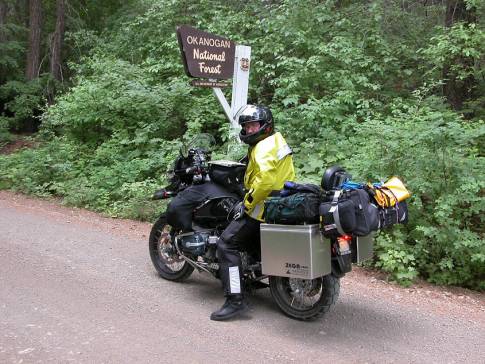
You can tell this is early on in the trip, everything is still clean!
We did an initial 700 mile break-in loop through the Cascade range of mountains in northern Washington, then returned to Seattle for the bike’s first service appointment.
While there, I went down to the Pike Street Market to shoot some pictures. It was Saturday, so the place was an absolute madhouse, jammed with a few locals and lots of tourists. While mostly known for its fish markets (both static and flying), I found the flowers and the vegetables equally enticing.
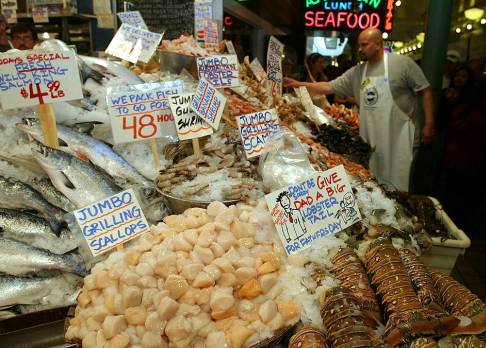

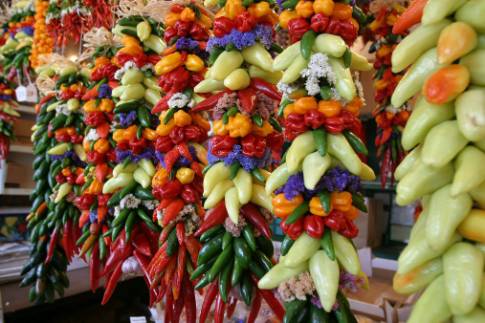
We were quickly back on the road heading south down the spine of the Cascade mountain range. Washington is a state of immense natural beauty and blessed with abundant rainfall. There is a waterfall, lake or stream around nearly every corner.
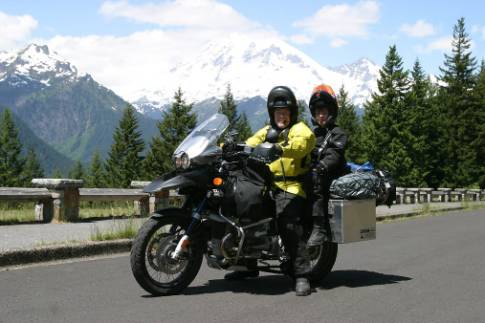
Once in Oregon, we continued down the Cascades, with stops at Mt. Hood and Crater Lake, including an evening at the Crater Lake Lodge watching the sun set over the lake accompanied by a bottle of excellent local wine.
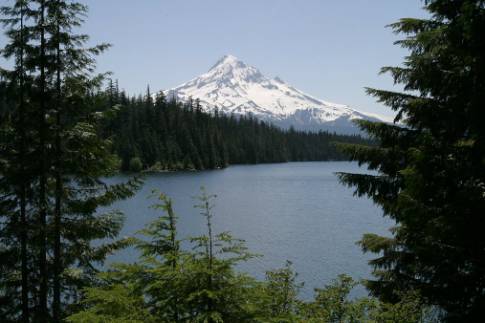
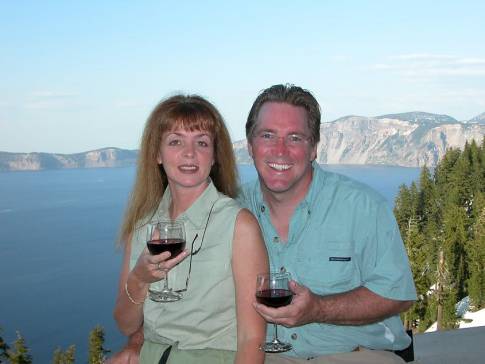
Once we crossed into California, we went West to the coast to travel through the Redwoods National Forest. The immensity of these trees is difficult to capture, as is the verdant fertility of the forest floor. One of the most interesting places we visited was a portion of the Pacific coast at the foot of the redwood forest where a veritable graveyard of trees was gathered. It was like walking among the bleached bones of elephants who had sought out a place of majestic beauty and solitude to die.
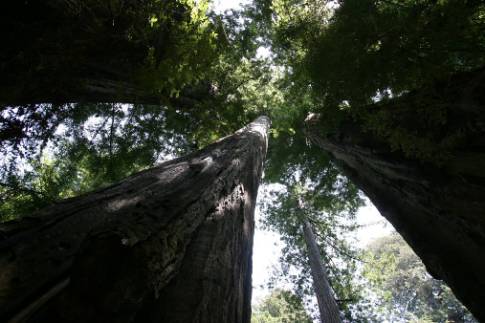
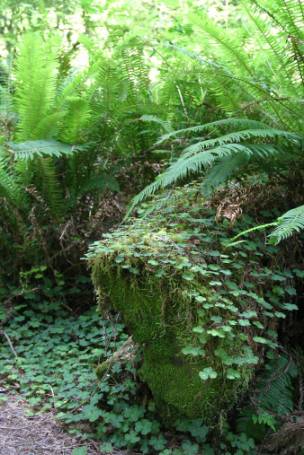
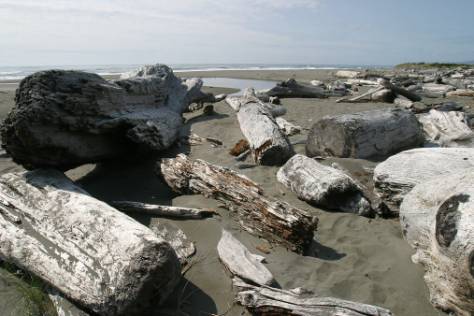
From the redwoods we blasted down 101 to San Francisco to have dinner with friends, then pounded south on 5 to the mountains above Los Angeles for a family celebration the following evening.
The next morning we took the long way home (over 300 miles) through the twisting roads of the San Bernardino and Cleveland National Forest, including an extended morning ride above the clouds.
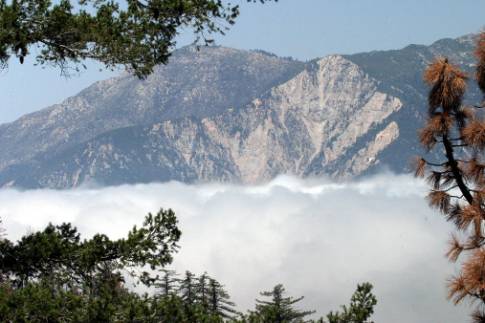
It was a long and beautiful ride through the Pacific Northwest, filled with adventure, challenges and uncountable rewards. As the sun set on our trip, we arrived home a little tired physically, but much renewed spiritually.
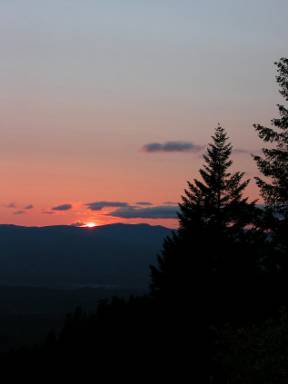
PS – I was a little preoccupied with learning the new bike, etc. on this trip, so I didn’t shoot all that much. Steph took some great shots. In particular, she was able to photograph just about every wildflower that grows in Washington, Oregon and Northern California.
This shot is a study of the master at work:
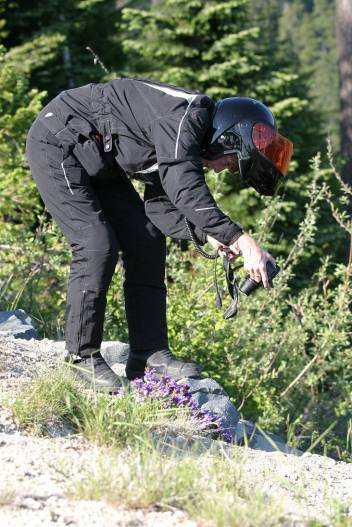
And here’s a small sampling of the results (the high resolution version of this is quite stunning, let me know if you want a copy and I’ll email you the file):
